
Addressing the Few: Applying Focused Deterrence to Police Misconduct
The costs of police misbehavior and misconduct are incalculable. A wide range of behaviors—from verbal abuse to fatal uses of force—have ripple effects far beyond
The costs of police misconduct are incalculable. A wide range of behavior, from verbal abuse to fatal use of force, causes direct harm, vicarious trauma, and undermines public safety. It costs cities and taxpayers millions of dollars in lawsuit payouts, and causes reputational harm to a department which, in turn, can make it difficult to retain and recruit new officers. Police executives, policymakers, academics, and advocates are looking for new ways to create effective accountability structures in policing.
NNSC, with support from Arnold Ventures, is exploring the potential for a focused-deterrence approach to police misbehavior and police misconduct. Experience and a growing body of research suggest that police misconduct may be susceptible to this kind of intervention. Like other problems that have been effectively addressed using a focused deterrence framework, police misbehavior and misconduct appear to be concentrated among a small number of people who are associated with a disproportionate number of incidents, and those people are often connected to each other in networks.
Central to this project is the importance of organizational justice, officer well-being, and morale. These issues have a tremendous impact on job performance and by extension, police-community relationships, public and officer safety, and the function of a department as a whole. Recognizing police officers experience stress and trauma on the job, we intend to develop an approach that will identify and offer meaningful support to officers who need it, shift cultural norms, and minimize the need for punitive action.
The intervention framework will aim to identify those at the highest risk, craft effective direct communication, design outreach and support structures that prioritize officer wellness, enhance certainty and fairness of response to unwanted behavior, and emphasize legitimacy in internal and external relationships.
In consultation with current and former law enforcement officers and a range of subject matter experts, NNSC will draw from original and existing research to produce a pilot intervention design and implementation plan.
[i] Zhao, Linda, and Andrew V. Papachristos. “Network Position and Police Who Shoot.” The ANNALS of the American Academy of Political and Social Science 687, no. 1 (2020): 89-112; Wood, George, Daria Roithmayr, and Andrew V. Papachristos. “The Network Structure of Police Misconduct.” Socius 5 (2019): 2378023119879798; Ouellet, Marie, Sadaf Hashimi, Jason Gravel, and Andrew V. Papachristos. “Network exposure and excessive use of force: Investigating the social transmission of police misconduct.” Criminology & Public Policy 18, no. 3 (2019): 675-704
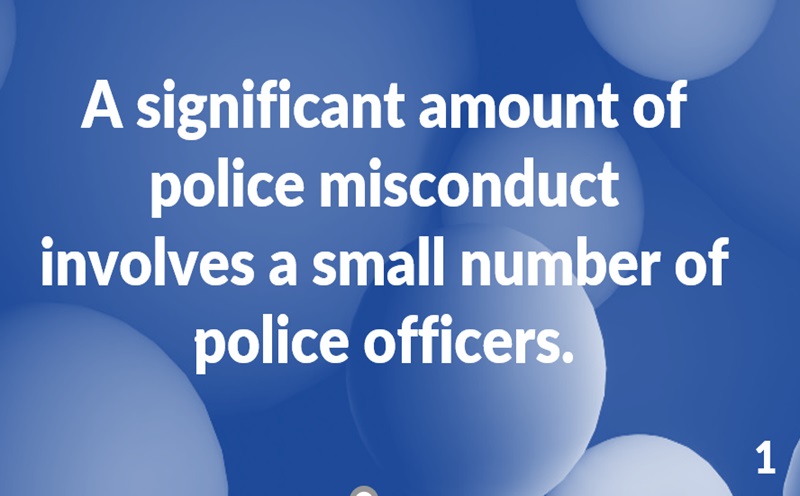

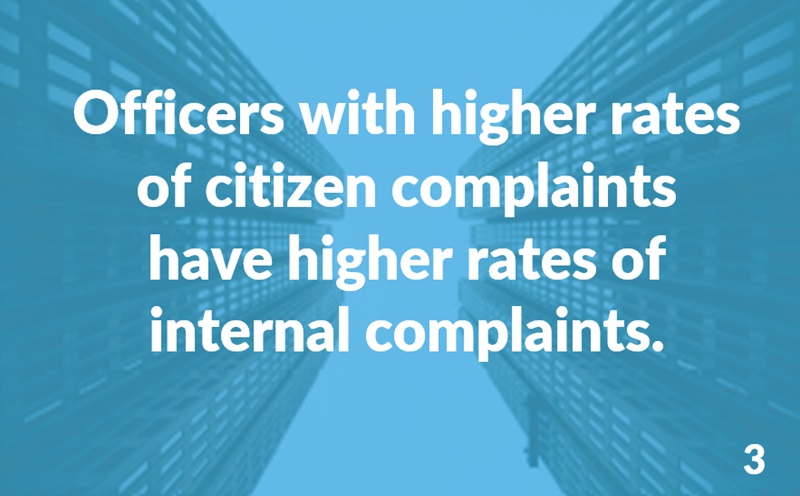
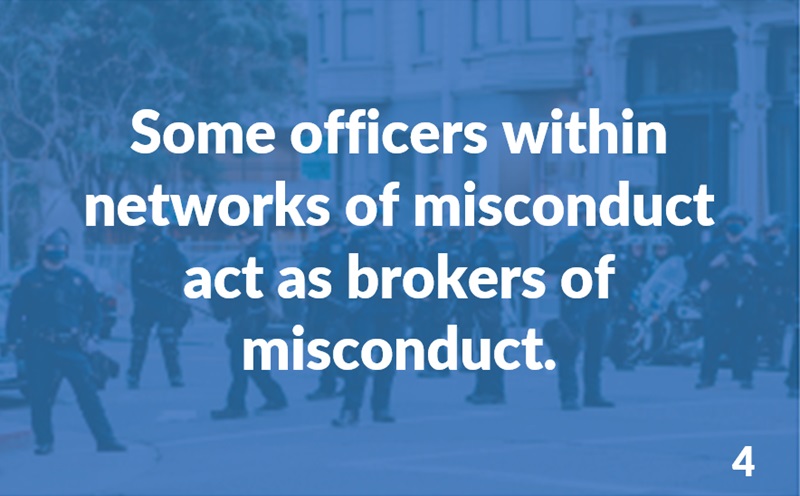
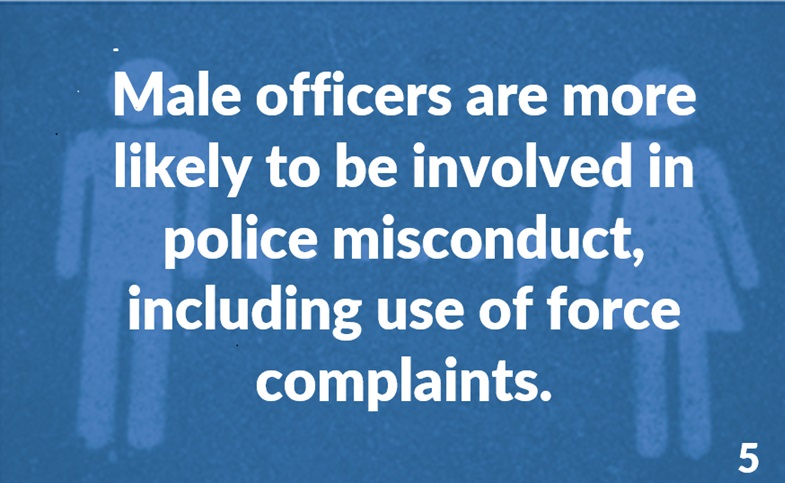
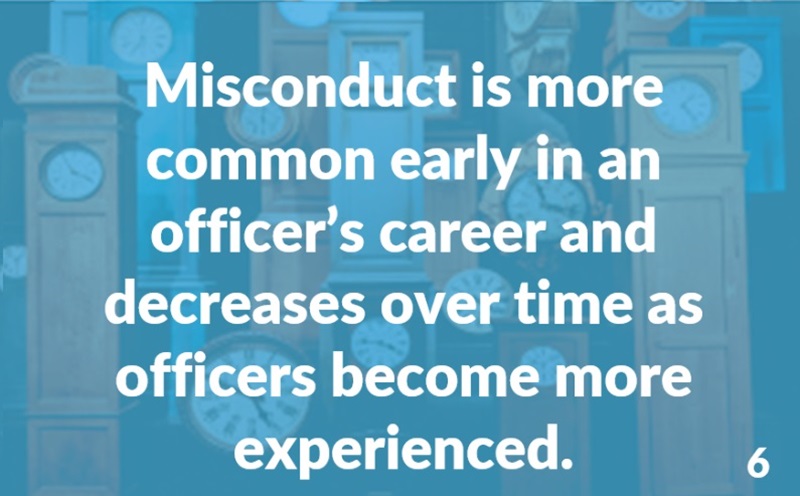
Slide 1
Brandl, Steven G., Stroshine, Meghan S., and Frank, J. “Who are the Complaint-Prone Officers?: An Examination of the Relationship Between Police Officers’ Attributes, Arrest Activity, Assignment, and Citizens’ Complaints About Excessive Force.” Journal of Criminal Justice 29, no. 6 (2001): 521-529.
Christopher, Warren. (Ed.). Report of the Independent Commission on the Los Angeles Police Department. Diane Publishing, 1991.
Dugan, John R., and Breda, Daniel R. “Complaints about Police Officers: A Comparison among Types and Agencies.” Journal of Criminal Justice 19, no. 2 (1991): 165-171.
Harris, Christopher J. “Problem Officers? Analyzing Problem Behavior Patterns from a Large Cohort.” Journal of Criminal Justice 38, no. 2 (2010): 216-225.
Lersch, Kim M., and Mieczkowski, T. “Who Are the Problem-Prone Officers? An Analysis of Citizen Complaints.” American Journal of Police 15, no. 3 (1996): 23-44.
Ouellet, Marie, Hashimi, Sadaf, Gravel, Jason, and Papachristos, Andrew V. “Network Exposure and Excessive Use of Force: Investigating the Social Transmission of Police Misconduct.” Criminology & Public Policy 18, no. 3 (2019): 675-704.
Quispe-Torreblanca, Edika G., and Stewart, Neil. “Causal Peer Effects in Police Misconduct.” Nature Human Behaviour 3, no. 8 (2019): 797-807.
Terrill, William, and Ingram, Jason R. “Citizen Complaints against the Police: An Eight City Examination.” Police Quarterly 19, no. 2 (2016): 150-179.
Wood, George, Roithmayr, Daria, and Papachristos, Andrew V. “The Network Structure of Police Misconduct.” Socius: Sociological Research for a Dynamic World 5, (2019): 1-18.
Slide 2
Cubitt, Timothy I. “Using Network Analytics to Improve Targeted Disruption of Police Misconduct.” Police Quarterly 26, no. 1 (2021): 24-53.
Jain, Akshay, Sinclair, Rajiv, and Papachristos, Andrew V. “Identifying Misconduct-Committing Officer Crews in the Chicago Police Department.” PLoS ONE 17, no. 5 (2022): 1-21.
Ouellet, Marie, Hashimi, Sadaf, Gravel, Jason, and Papachristos, Andrew V. “Network Exposure and Excessive Use of Force: Investigating the Social Transmission of Police Misconduct.” Criminology & Public Policy 18, no. 3 (2019): 675-704.
Quispe-Torreblanca, Edika G., and Stewart, Neil. “Causal Peer Effects in Police Misconduct.” Nature Human Behaviour 3, no. 8 (2019): 797-807.
Wood, George, Roithmayr, Daria, and Papachristos, Andrew V. “The Network Structure of Police Misconduct.” Socius: Sociological Research for a Dynamic World 5, (2019): 1-18.
Slide 3
Harris, Christopher J. “The Relationship between Career Pathways of Internal and Citizen Complaints.” Police Quarterly 14, no. 2 (2011): 142-165.
Slide 4
Cubitt, Timothy I. “Using Network Analytics to Improve Targeted Disruption of Police Misconduct.” Police Quarterly 26, no. 1 (2021): 24-53.
Zhao, Linda, and Papachristos, Andrew V. “Network Position and Police Who Shoot.” The ANNALS of the American Academy of Political and Social Science 687, no.1 (2020): 89-112.
Slide 5
Brandl, Steven G., Stroshine, Meghan S., and Frank, J. “Who are the Complaint-Prone Officers?: An Examination of the Relationship Between Police Officers’ Attributes, Arrest Activity, Assignment, and Citizens’ Complaints About Excessive Force.” Journal of Criminal Justice 29, no. 6 (2001): 521-529.
Chappell, Allison T., and Piquero, Alex. R. “Applying Social Learning Theory to Police Misconduct.” Deviant Behavior 25, no.2 (2004): 89-108.
Ouellet, Marie, Hashimi, Sadaf, Gravel, Jason, and Papachristos, Andrew V. “Network Exposure and Excessive Use of Force: Investigating the Social Transmission of Police Misconduct.” Criminology & Public Policy 18, no. 3 (2019): 675-704.
Quispe-Torreblanca, Edika G., and Stewart, Neil. “Causal Peer Effects in Police Misconduct.” Nature Human Behaviour 3, no. 8 (2019): 797-807.
Terrill, William, and Ingram, Jason R. “Citizen Complaints against the Police: An Eight City Examination.” Police Quarterly 19, no. 2 (2016): 150-179.
Wood, George, Roithmayr, Daria, and Papachristos, Andrew V. “The Network Structure of Police Misconduct.” Socius: Sociological Research for a Dynamic World 5, (2019): 1-18.
Slide 6
Brandl, Steven G., Stroshine, Meghan S., and Frank, J. “Who are the Complaint-Prone Officers?: An Examination of the Relationship Between Police Officers’ Attributes, Arrest Activity, Assignment, and Citizens’ Complaints About Excessive Force.” Journal of Criminal Justice 29, no. 6 (2001): 521-529.
Harris, Christopher J. “Exploring the Relationship between Experience and Problem Behaviors: A longitudinal Analysis of Officers from a Large Cohort.” Police Quarterly 12, no 2. (2009): 192-213.
Harris, Christopher. “The Onset of Police Misconduct.” Policing: An International Journal 37, no. 2 (2014): 285-304.
Lersch, Kim M., and Mieczkowski, T. “Who Are the Problem-Prone Officers? An Analysis of Citizen Complaints.” American Journal of Police 15, no. 3 (1996): 23-44.
Ouellet, Marie, Hashimi, Sadaf, Gravel, Jason, and Papachristos, Andrew V. “Network Exposure and Excessive Use of Force: Investigating the Social Transmission of Police Misconduct.” Criminology & Public Policy 18, no. 3 (2019): 675-704.
Quispe-Torreblanca, Edika G., and Stewart, Neil. “Causal Peer Effects in Police Misconduct.” Nature Human Behaviour 3, no. 8 (2019): 797-807.
Terrill, William, and Ingram, Jason R. “Citizen Complaints against the Police: An Eight City Examination.” Police Quarterly 19, no. 2 (2016): 150-179.
Wood, George, Roithmayr, Daria, and Papachristos, Andrew V. “The Network Structure of Police Misconduct.” Socius: Sociological Research for a Dynamic World 5, (2019): 1-18.

The costs of police misbehavior and misconduct are incalculable. A wide range of behaviors—from verbal abuse to fatal uses of force—have ripple effects far beyond
Office: 500 W. 56th St., Suite #031W • New York, NY 10019
Mailing: 524 W. 59th St., Suite #031W • New York, NY 10019
Privacy Policy
